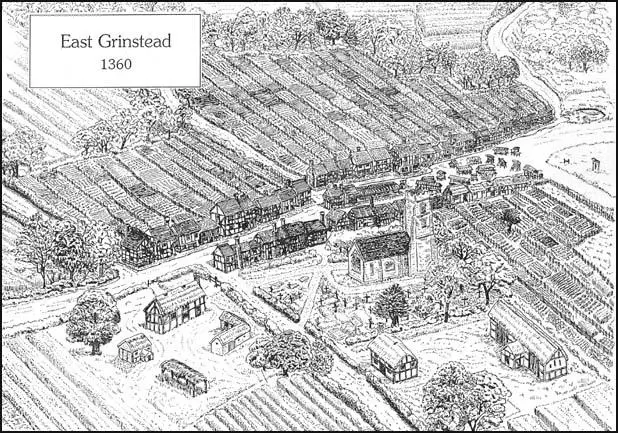14th Century Towns
In the 14th century the vast majority of people in England lived in villages. Historians have estimated that less than 5% of the population lived in towns.
Villages usually developed into towns for geographical reasons. Sometimes it was because a village was sited by a good harbour or was on a high ridge close to a river. Other towns emerged at sites where it was a good place to cross a river. Towns also developed where two roads crossed. These places were guaranteed a steady stream of travellers. People interested in selling goods were attracted to places such as castles and important religious buildings. Houses were built next to these buildings and it was not long before this settlement became a town.
The main reason people began living in East Grinstead was that it was close to the road that the Romans had built between the south coast and London. The Normans used the same transport route as the Romans and in the early part of the 13th century the population of East Grinstead increased.
One of the attractions of East Grinstead was that it had a good underground water supply. Sometime in the distant past people realised that East Grinstead was a good place to dig wells. The water was drawn up from wells dug into the sandstone by using a bucket and windlass. This water was good to drink as it had been filtered clean as it travelled through the sandstone.
East Grinstead became a town in about 1220. The charter has not survived so it is impossible to discover the exact date. At this time East Grinstead was owned by Gilbert de Aquila. In 1230 King Henry III gave permission for Aquila to hold a weekly market and two annual fairs at East Grinstead.
East Grinstead, like most towns in the 14th century was fairly small. Accurate population figures do not exist for this period. After studying tax records historians have estimated that by 1350 about 250 people lived in the town and another 700 lived in the surrounding villages.
In 1360, the town of East Grinstead was owned by Reginald Cobham, the first Baron of Sterborough. King Edward III had granted the town to Reginald Cobham in 1340. This was a reward for his loyal service in the 100 Years War. The Baron of Sterborough spent a lot of time fighting in France. When he was in England he did not live in East Grinstead. The Baron's main house was at Lingfield, a small village 3 miles away.

